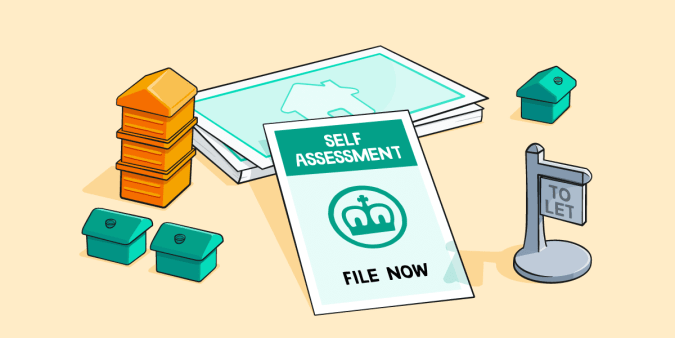Replacement relief: what can landlords claim for wear and tear?

In 2024, 35% of landlords in England said they were concerned about the cost of repairs, as well as forthcoming legislation changes and tax changes. And those costs add up!
UK landlords have a responsibility to ensure that their properties are safe and appropriately maintained. Part of this is replacing household items, such as furniture, white goods and carpets, when they are no longer fit for purpose. Don’t worry though - you may be able to claim a tax deduction for the cost of replacing these items through replacement of domestic items relief, and we’re here to tell you how this relief works.
What is ‘replacement of domestic items relief’?
Replacement of domestic items relief allows landlords of furnished, part-furnished or unfurnished residential dwellings to claim deductions for the cost of certain household items. Put simply, this means you may be able to claim tax relief if you have replaced certain items in your rental property.
What you can claim for
Replacement of domestic items relief may cover:
- moveable furniture (e.g. sofas, tables, beds)
- soft furnishings (e.g. carpets, rugs, curtains)
- household appliances (e.g. washing machines, toasters)
- kitchenware (e.g. pans, plates and bowls, cutlery)
It’s important to note that replacement relief can only be claimed where a new domestic item replaces an old domestic item that is no longer fit for purpose. The new item must be for the exclusive use of the property tenant and the old item can no longer be available to them.
What you can’t claim for
Replacement of domestic items relief cannot be claimed for furnished holiday lets or if you use the Rent a Room Scheme. You also can’t claim replacement relief for the initial purchase of any household items, or if you’ve already claimed capital allowances for them. You can find more details in the government’s Property Income Manual.
Not all household items may be claimed for under replacement relief. Fixtures, which include any boiler or water-filled radiator, basins, toilets, baths and built-in furniture, are not considered to be domestic items and can’t be claimed for.
If you’re not sure what items you can claim for, speak to an accountant or bookkeeper.
How much can you claim?
You can only claim the cost of an equivalent replacement item, rather than an upgrade. If you do choose an improved or upgraded item, you can’t claim replacement relief for the full cost. For example, if you replace a single wardrobe that cost £100 with a triple wardrobe that cost £250, you would only be able to claim £100 as a deduction.
However, when replacing an older item, the modern equivalent of that item will not be considered an improvement on the original, so you can claim the total cost for this. For example, if you replace an old washing machine that cost £200 with a new model that offers similar functionality but is more efficient and costs £350, the total cost can be claimed.
Any disposal or delivery costs incurred when replacing domestic items can also be included in the deductions. For example, collection fees by a recycling specialist, installation costs or delivery costs charged by the retailer can be included.
Calculating the amount you can claim
To calculate the amount you can deduct under replacement of domestic items relief, you should:
- take the cost of the equivalent replacement item (usually capped at the cost of the original item)
- add this to any charges incurred when disposing of the old item or acquiring the new item
- deduct the amount received if the old item is sold or part-exchanged from the total
For example, Michael has purchased a new six-seater dining table for his furnished rental property at a cost of £600. There is currently a four-seater table in the property that was £400. This means the amount that can be claimed is limited to £400. Michael then pays a £20 delivery fee for the new table and sells the old table for £50.
Therefore, the total amount deductible under replacement of domestic items relief is £400 + £20 - £50 = £370.
Is replacement relief the same as the Wear and Tear Allowance?
Replacement of domestic items relief was introduced in April 2016 to replace the Wear and Tear Allowance with a “more consistent and fairer” system. The Wear and Tear Allowance meant that landlords with fully furnished properties could claim 10% of their net rent each year to contribute to the replacement of domestic items. Any replacements incurred from 6th April 2016 must claim replacement relief.
Note: The Wear and Tear Allowance should not be confused with ‘fair wear and tear’, which is a separate policy that may appear within a property rental agreement. In this context, fair wear and tear refers to the condition a dwelling is left in when the tenant vacates the property. Fair wear and tear refers to any damage to the property or its contents that is deemed to have occurred as a result of reasonable use during the tenant’s rental period. For example, minor scuffing on paintwork or wearing to carpets may be considered fair wear and tear and will not result in the landlord making deductions from the deposit.
Introducing FreeAgent for Landlords
If you’re wondering how to manage your tax obligations as a landlord, then FreeAgent can help. FreeAgent for Landlords will help you manage your property finances and submit your Self Assessment tax return to HMRC.
Originally published
Last updated
Disclaimer: The content included in this blog post is based on our understanding of tax law at the time of publication. It may be subject to change and may not be applicable to your circumstances, so should not be relied upon. You are responsible for complying with tax law and should seek independent advice if you require further information about the content included in this blog post. If you don't have an accountant, take a look at our directory to find a FreeAgent Practice Partner based in your local area.


